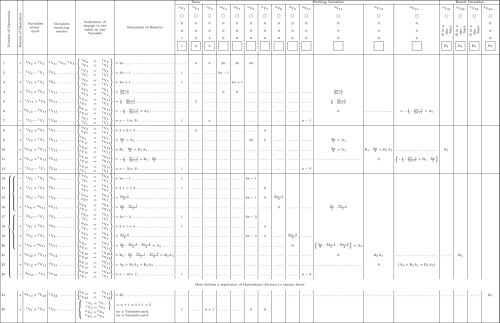Posts tagged with 'Ada'
Welcome to the latest installment of the Brief Bio series, where I'm writing up very informal biographies about major figures in the history of computers. Please take a look at the Brief Bio archive, and feel free to leave corrections and omissions in the comments.
Ada Lovelace
Augusta Ada Byron, born in 1815 was not allowed to see a picture of her father, the Romantic poet Lord (George Gordon) Byron, until she became 20 years old. Her father never had a relationship with her. Her mother was distant as well, and even referred to Ada once as "it" instead of "her". In addition to these hurdles, Ada also suffered from vision-limiting headaches and paralyzing measles. However, if it weren't for these sicknesses, she might not be such a significant figure in the history of computing. Because she was part of the aristocracy and had access to books and tutors, she was able to learn about mathematics and technology even while sick, and picked up an interest in them.
She met Babbage in 1833 through a mutual friend. Because of her interest in technology and mathematics, she was tremendously interested in Babbage's Difference Engine. She became friends with Babbage--visiting and corresponding often.
Ada was married in 1835 and became a Baroness. After the birth of her first child, Annabella, she again suffered an illness for months. In 1838, her husband became the Earl of Lovelace. She became the Countess of Lovelace, which leads to her most commonly used moniker, "Ada Lovelace".
Starting in 1842, she was translating papers by Luigi Menabrea, who was writing about Babbage's proposal of the Analytical Engine. In one of these papers, Sketch of The Analytical Engine, Invented by Charles Babbage, there is a "note" or "appendix" called "Note G". This note is what many people point to as the first computer program. Not only is it the first program, it also demonstrates the core concept of the Analytical Engine: it's a more general purpose machine than any of the adding machines that have come before it. It shows that the machine would be capable of branching, addressing memory, and therefore processing an algorithm.

Paul Sinnett used Ada's algorithm to create a Scratch program, that you can try out and use to visualize the algorithm (just click "See Inside").
There is something of a controversy/dispute about Ada and this program. It's been argued that Babbage prepared the bulk of these notes for her, and therefore her contributions are not as significant. It's also argued that Babbage had already written several "programs" (albeit much simpler programs) prior to the Bernoulli program in Note G. and therefore Babbage is the first programmer, not Ada.
A notable passage that Babbage wrote about the Bernoulli algorithm in regards to Ada:
"We discussed together the various illustrations that might be introduced: I suggested several, but the selection was entirely her own. So also was the algebraic working out of the different problems, except, indeed, that relating to the numbers of Bernouilli, which I had offered to do to save Lady Lovelace the trouble. This she sent back to me for an amendment, having detected a grave mistake which I had made in the process."
So, at the very least, she created the first ever bug report. My judgement is that Ada is a significant colleague and collaborator of Babbage's. She was not just a translator or secretary; she contributed to his work in a significant and meaningful way. Babbage's work on the Analytical Engine probably wouldn't have gone nearly as far without Ada's help. Certainly she is just as worthy of celebration (every October there's an Ada Lovelace Day) as is Charles Babbage.
Ada and her husband were really into gambling. By 1851, she had started a gambling syndicate, and it's possible that she and her husband were trying to use mathematic models to get an edge on horse racing bookies. Seems like a great idea to me, given how advanced her knowledge of mathematics probably was compared to the majority of gamblers at the time; but apparenly the execution didn't work, and they ran up huge gambling debts. She died from cancer the next year at the tragically young age of 36, leaving behind three children. A short life, plagued by illness and family struggles and ended by cancer. But "the light that burns twice as bright burns half as long."
You may have also heard of the Ada programming language, which is named after her.
Ada is a language that was developed for the U.S. Department of Defense. It has an emphasis on safety, containing a number of compile-time and run-time checks to avoid errors that other languages would otherwise allow, including buffer overflows, deadlocks, misspellings, etc. At one point, it was thought that Ada would become a dominant language because of some of its unique features, but that has obviously not happened. However, it's not a dead language and lives on in specialty applications. It's #32 on the TIOBE index as of this writing, beating out Fortran, Haskell, Scala, Erlang, and many others.
